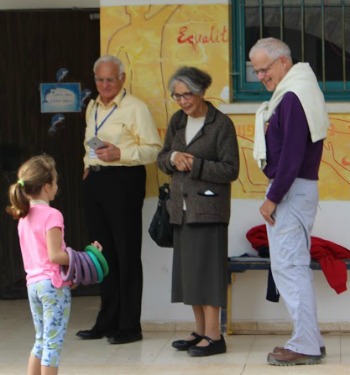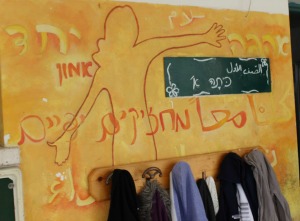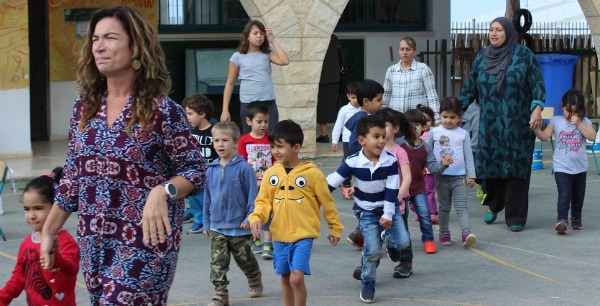 Jewish and Arab students celebrated “Tolerance Day” when we visited Bridge Over the Wadi, the
bilingual elementary school in the Israeli Arab town of Kufr Kara. This extraordinary school is one of a handful
statewide, in which Jewish and Arab kids study and socialize in Hebrew and Arabic, learn about each other’s
culture and narrative, and build common ground.
Jewish and Arab students celebrated “Tolerance Day” when we visited Bridge Over the Wadi, the
bilingual elementary school in the Israeli Arab town of Kufr Kara. This extraordinary school is one of a handful
statewide, in which Jewish and Arab kids study and socialize in Hebrew and Arabic, learn about each other’s
culture and narrative, and build common ground.
“How is ‘Tolerance Day’ different from any other day here,” I asked the school’s principal, Dr. Hassan Aghbaria. “That’s a good point,” he laughed, “we teach and experience tolerance every day, year round.”
Dr. Aghbaria’s school is one of six bilingual schools throughout Israel, run by Hand in Hand, the Center for Jewish-Arab education in Israel. The one in Kufr Kara is the only place in Israel where Jewish parents take their children, every day, to a school in an Arab community.
To understand how unusual these schools are, one must realize how segregated Israel’s school system is, and how segregated Israeli society is. Jewish and Arab students attend separate schools, where separate curricula are taught. Jewish and Arab citizens hardly socialize. They hardly get together. “What we have in this school is a virtual environment. Everything outside is segregated, while everything inside our school is integrated,” Principal Aghbaria told participants in APN’s Israel study tour who visited his school mid-November. The challenge, he said, is to extend this environment beyond the school, beyond Kufr Kara, and beyond the five elementary school years that students attend.
Following our visit to Bridge Over the Wadi, after our tour ended, I met with my friend Shalom (Shuli) Dichter who runs Hand in Hand. He’s been the nonprofit’s executive director since 2011. Back then, when he took charge of Hand in Hand, he told me that the chief agents for mobilizing the bilingual schools as a tool for social change must be the parents rather than the students. Today, almost seven years later, he says that even he is surprised by the parents’ commitment and sense of mission. “The parents are determined to not allow the segregated reality to prevail,” Dichter said. “And thanks to them, Hand in Hand has become a network of civil agitation working constantly to disrupt the natural separation between Jews and Arabs in Israeli society. That’s our story. It’s a story of civil resistance.”
 Examples abound. On November 15, the Israeli media reported that a coffee shop in Haifa instructed
its Arab staff (in violation of Israeli law) not to speak Arabic in the workplace. A day later, a group of
Jewish and Arab Hand in Hand parents organized an Arabic teach-in demonstration in protest of this step. “That’s
what you want to see,” Dichter said. “That’s how we and the parents want to educate the kids.”
Examples abound. On November 15, the Israeli media reported that a coffee shop in Haifa instructed
its Arab staff (in violation of Israeli law) not to speak Arabic in the workplace. A day later, a group of
Jewish and Arab Hand in Hand parents organized an Arabic teach-in demonstration in protest of this step. “That’s
what you want to see,” Dichter said. “That’s how we and the parents want to educate the kids.”
Israel’s school system – as well as the overall society – is still segregated. But more and more communities across the state, communities in which Jews and Arabs live in proximity, are urging Hand in Hand to establish bilingual schools. “When raising kids in a bilingual school and a shared community becomes a viable option for parents, for people in their thirties and forties, this is huge,” said Dichter.
